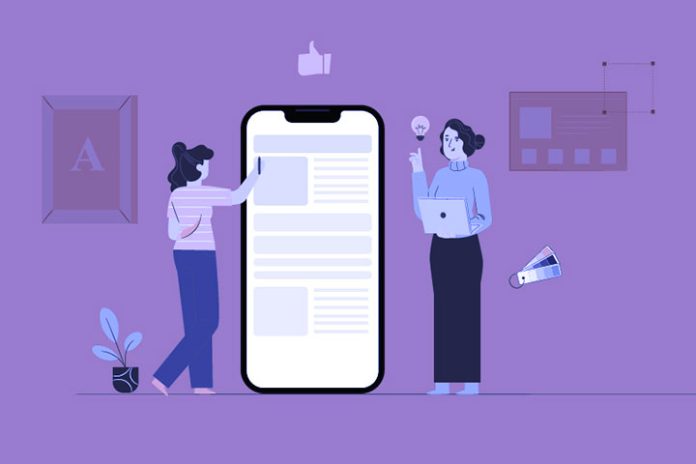Investing time and resources in the Design is a determining factor in the success and sustainability of the application. It’s important to note that visual appearance is only one design aspect! The Design more broadly encompasses the application’s ergonomics, usability and performance. The goal is an optimal user experience.
In this article, we offer you eight current trends in Design:
1. Dark mode
Most significant applications have adopted dark mode. Dark mode is a high-contrast display option with a dark background and light elements.
This dark mode is becoming more and more attractive because it allows you to:
- Reduce eye fatigue
- save battery
- Provide additional comfort in low light conditions.
However, it is desirable to leave the choice to the user to adapt to their individual preferences.
2. Simplicity
Users are fans of clean, minimalist designs. Simple designs offer, in fact, many advantages:
- Faster loading: fewer graphic elements to load
- A focus on content: only the essential elements
- A responsive format: easily adaptable to different screen sizes
- Ease of use: fluid and intuitive navigation
Minimalism remains a dominant trend in mobile app design. Clean interfaces, strategic use of space, simple colour palettes and minimalist design elements characterize it.
3. Design of gestures
Specific touch gestures characterize the gesture design trend in mobile applications. These gestures allow the user to interact with the application, replacing the predominant use of physical or virtual buttons.
This trend brings:
- A more intuitive and fluid approach by imitating the natural actions of the user in the real world
- Maximizing available screen space
- Reduced dependency on buttons
Interactive gestures such as swipes, pinches, and swipes are increasingly being developed to simplify navigation and interaction within applications.
Also Read: Mobile Phone Radiation: How Does It Affect Our Health?
4. Neomorphic Design
The Design of a mobile application is essential for user engagement. This approach blends flat elements and soft shadows to design an appealing aesthetic.
This makes it possible, in particular, to:
- Give a tactile aspect favouring the user-friendliness of the application.
- Provide better readability
- Introduce a visual innovation that stands out from other applications.
It is important to note that neomorphic Design can also present challenges. In particular, it is necessary to ensure its adequate implementation to ensure readability and accessibility.
5. Personalization
To make the user experience more suitable for everyone, many applications today allow users to shape the application according to their tastes.
There are many advantages to this:
- Display targeted recommendations based on preferences.
- Reduce information overload.
- Adapt to local or cultural preferences.
- Offer a graphical interface to suit users’ tastes.
This leads to a more rewarding experience and more regular app use.
6. Chatbots
Mobile applications integrating chatbots ensure automated and personalized assistance 24/7 to improve user experience and operational efficiency.
They can be used for:
- Convert sales by guiding the user throughout their purchasing process.
- Collect data on user preferences to improve the products offered.
- Expand the app’s reach to an international audience by supporting multiple languages.
- Automate specific repetitive tasks (reservations, orders, requests for information) to reduce the team burden.
Chatbots in mobile applications have become valuable tools for a more enriching mobile experience and better user satisfaction.
7. Artificial Intelligence
The advantages brought by the integration of AI in mobile applications are numerous; we can cite a few of them:
- Machine learning: AI continually improves to provide more relevant answers.
- Reducing errors: AI systems are consistent in how they process information and make decisions.
- Resource optimization: AI makes it possible to manage certain operations to free up human resources for other activities.
Artificial intelligence helps stimulate user engagement while providing a better understanding of users and reducing human resources.
8.Augmented reality
In all areas, augmented reality makes it possible to improve the user experience by mixing the physical and virtual worlds.
We can note some contributions of augmented reality:
- Intuitive interactions
- Immersive experiences
- Real-time visualizations
- Competitive differentiation
Augmented reality significantly improves the user experience in various fields, such as entertainment, education, e-commerce, etc. Thanks to AR, the application is more attractive to users.
To note
All these trends are fleeting and evolve quickly!
App designers must constantly stay updated with the latest ideas and technological advancements to create engaging mobile experiences that meet user expectations.
Also Read: How Does Responsive Design Influence Web Positioning?


